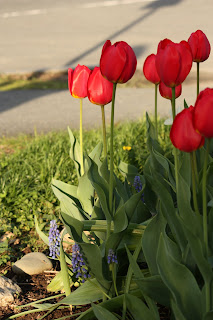The Healing Garden project looks weedy and I was ready to use my "garden weapons" to pull out all the weeds of my spot and even the one of my neighbor, same work done at the entrance.
Now it looks like this.
Some weeds ,like the grass seen in this picture, needed to dig deep into the soil to get rid the weeds off. In the picture we can see after I pulled out some roots (white) with the cape cod weeder tool. Note that the roots have some nods where some new weed grass will appear. The ending of the root is sharp and ready to spread out! Apparently, it is a Bermudagrass, which is a sod forming perennial that spreads by stolons, rhizomes and seed. Roots are produced at the nodes after new leaves or tillers are produced during the growing season and after new shoots are produced in the spring. Mature roots are yellow to brown while new roots are white [see above picture]. Mature roots deteriorate throughout the growing season and new roots are produced continuously. Root production and dieback has been reported to be particularly high in the spring at the onset of shoot production.
The lavender is growing healthy, it seems that its pH is around or above 7.
I left the garden after working two hours and half, I was sweating a lot! But pleased to see how the garden has a good looking.












































